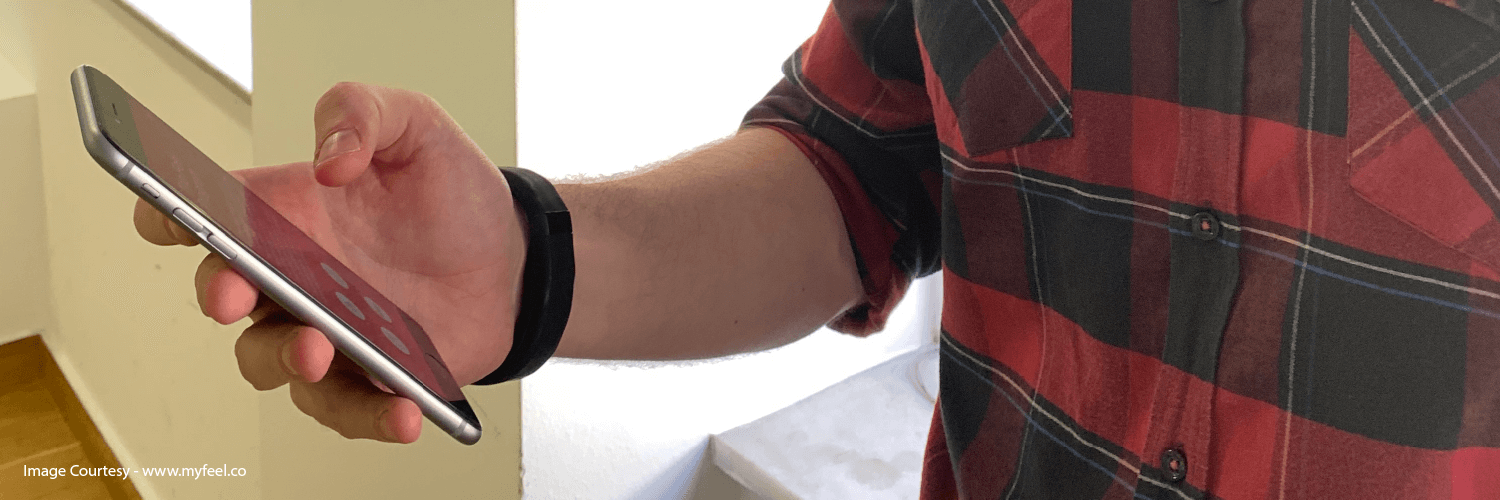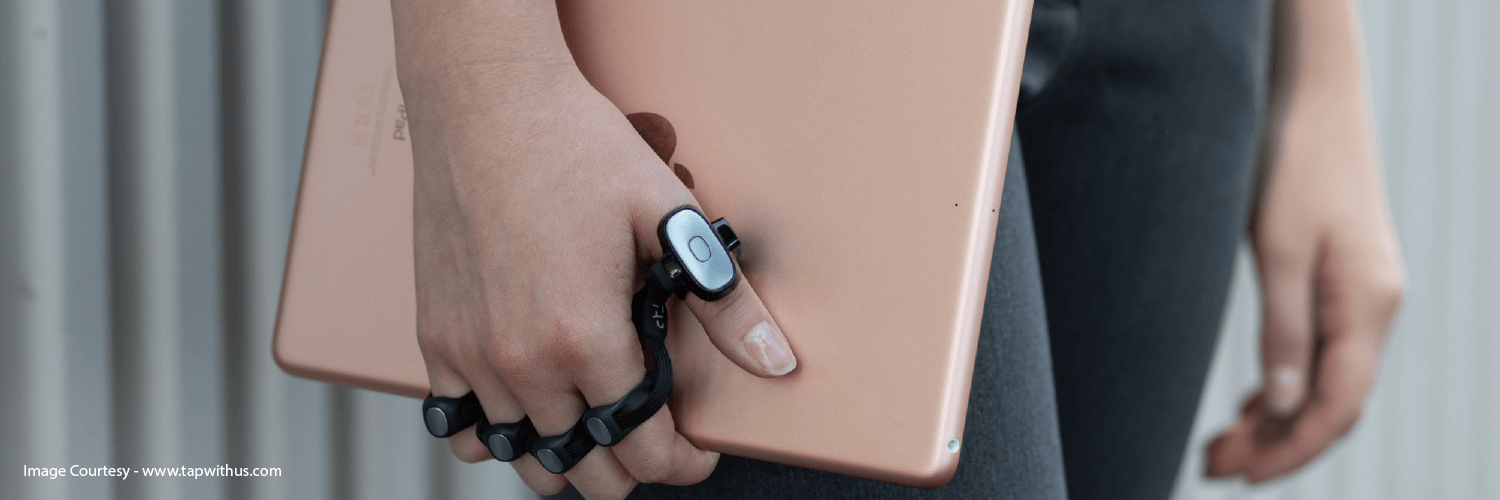4 Hands-free Frontline Worker Technologies For The 2020s
Déc 06, 2019 | 42Gears Team

Frontline workers have a hard upper limit to the amount and pace of manual labor they can perform, given the occupational hazards inherent to warehouses, factories, and other frontline worker domains. If a worker’s job involves manually moving heavy objects, for example, demanding faster performance will eventually come at the unacceptable cost of compromising their safety.
Emerging frontline worker technologies have introduced a way to safely enhance worker productivity: allowing employees to perform an array of functions while their hands are full. This way, employees can work more efficiently, while still taking every precaution necessary to avoid injury.
Take a look at four exciting hands-free frontline worker technologies that can enable your frontline workers to be more motivated, productive, and accurate.
Smart Rings (and Ring Scanners)

As the name suggests, smart rings are rings with built-in smart technology. The principal appeal of smart rings as a form of frontline worker technology is that the rings can perform many smartwatch functions in a small, cheap, and unobtrusive form factor. Smart rings such as the Oura, for example, can enable workers to unlock doors while carrying objects with both hands. On-board gyrometers can detect sudden rapid movement and alert fellow staff, serving as a simple form of lone worker protection.
Smart rings can also function as fitness trackers, enabling companies to extend fitness programs to frontline workers. Alternately, companies can use the biometric data obtained from these rings to assess levels of physical stamina and adjust workflows accordingly.
A very specific form of smart ring is the ring scanner, a ring attached to a barcode scanner, produced by companies such as Zebra. This enables hands-free barcode scanning, which can be invaluable for your company. The need to put down what one is holding to scan barcodes consumes a very small amount of time per action taken, but on the scale of your entire company, this can result in a staggering (and, thanks to the ring scanner, unnecessary) productivity loss.
Mixed-Reality Head-Mounted Displays (MR HMDs)

As exemplified by products like Microsoft’s HoloLens 2, mixed reality represents an exciting progression beyond current virtual and augmented reality (VR and AR) technologies. MR software superimposes digital information on real-world objects, and adjusts the information displayed to match the worker’s goals and needs.
Early research in this field suggests that MR HMDs can be a powerful hands-free training tool, enabling workers to learn with equivalent or greater accuracy as compared to resource-intensive methods like face-to-face training. The money companies save by reducing errors during employees’ first days on the job could be staggering, reducing or offsetting completely the costs of adopting MR HMD devices.
Galvanic Skin Response Devices

Hands-free galvanic skin response devices allow workers to easily learn more about their own emotions and experiences via sweat monitoring, and to optionally have that information relayed to other staff. This way, if employees operating heavy machinery are in a severely agitated state, they can be encouraged to take care of themselves, rather than potentially endangering others.
Managers can utilize these devices for more than just monitoring. The Feel Emotion Sensor, for example, offers an enterprise program wherein each worker is encouraged to monitor and sustain their own mental health. This, in turn, can improve workers’ perception of you and your company as a whole.
An important caveat for these devices is that they are good at measuring the intensity of emotion, but not the emotion itself. This doesn’t impact the usefulness of these devices in operating heavy machinery, where any extremely strong emotion can be disruptive, but could limit the accuracy of more generalized mental health monitoring.
Gesture Control Devices

Gesture control devices enable users to use finger movements as a means by which to control other devices. The most immediate benefit of this technology is the ability to accelerate device use training by allowing intuitive gesture controls in place of complicated interfaces. This has a variety of potential applications in industry; for instance, gesture control could enable employees to quickly master tasks like drone piloting.
To be fair, individuals whose hands are full may not be capable of making gestures; still, if someone’s hands are covered with a substance that makes touchscreen use unsanitary or infeasible, gesture control is a workaround that minimizes potential disruption.
Conclusion
All of these frontline worker technologies speak to the importance of helping these workers find ways to enhance their productivity while respecting the strenuous range of tasks they are already performing. Investing in frontline worker technologies lets you raise employee morale, reduce costs, and increase output.
As with rugged mobile devices and other frontline worker technology mainstays, coordinating every device is essential. Unified Endpoint Management software like 42Gears UEM solution is essential in allowing you to integrate new technologies into your network.
Additional Source: The Gartner Hype Cycle for Frontline Worker Technologies 2019
Explore 42Gears UEM Solution!
Subscribe for our free newsletter
